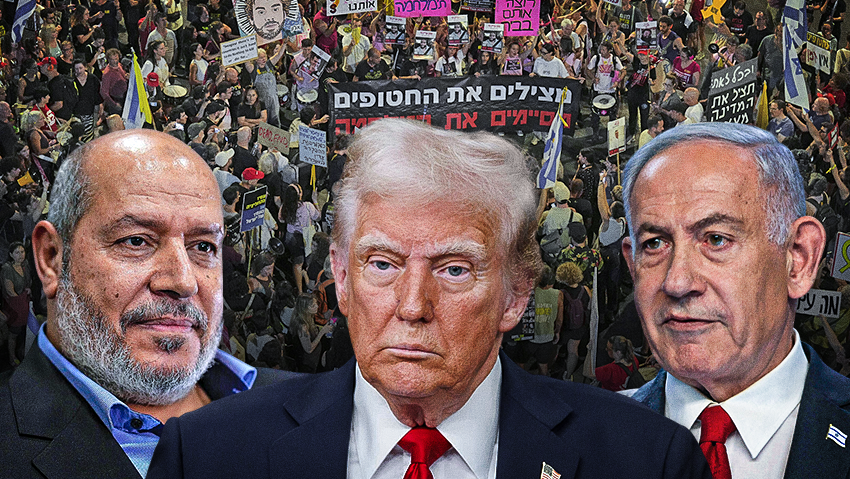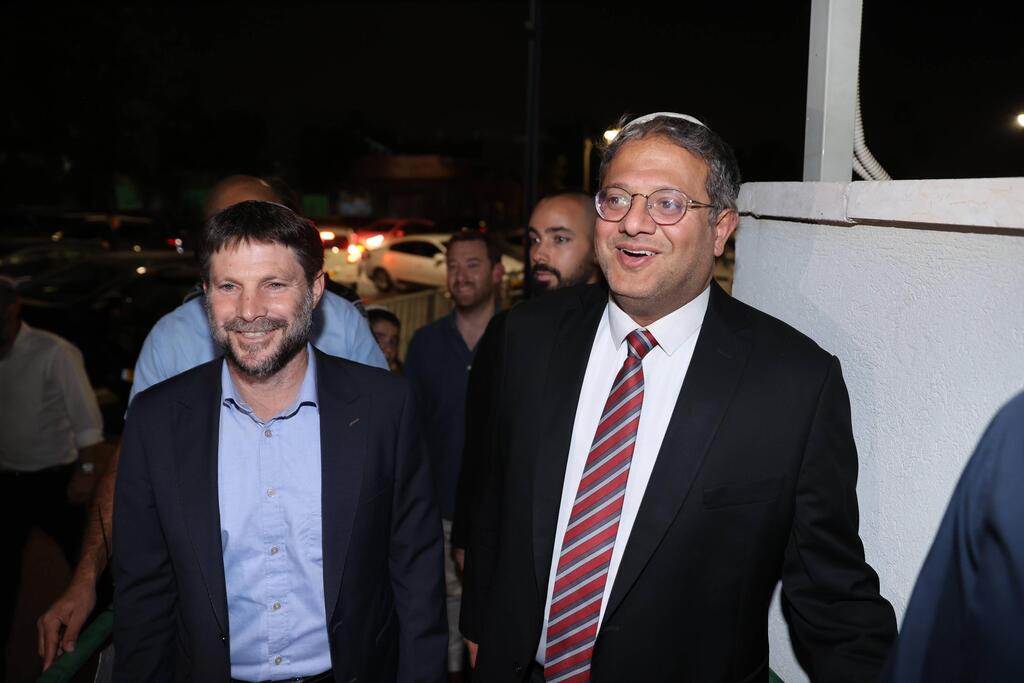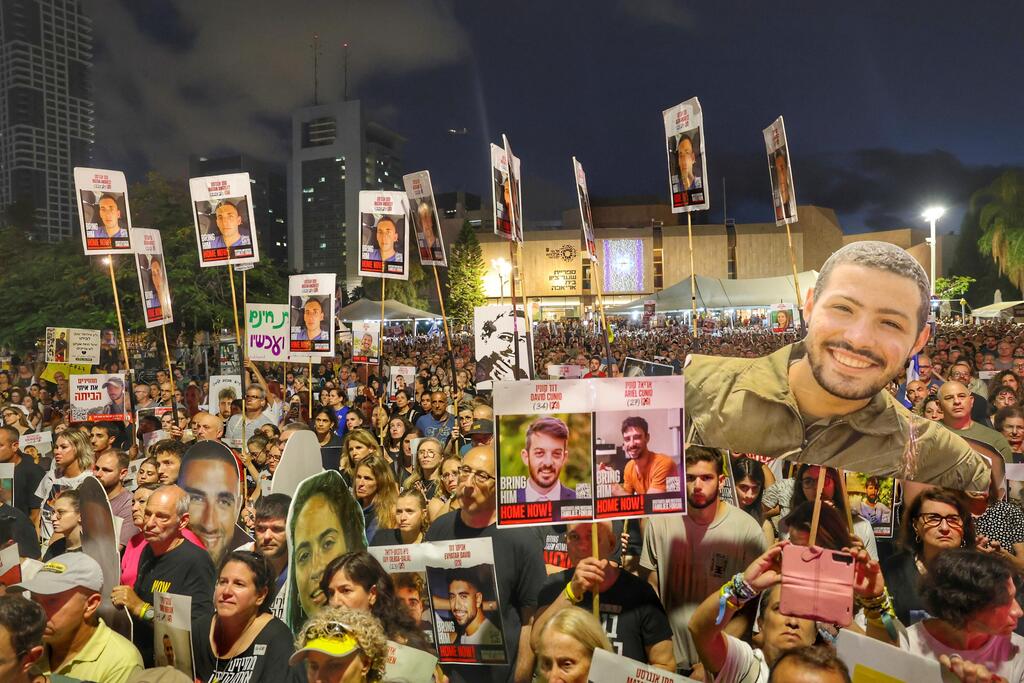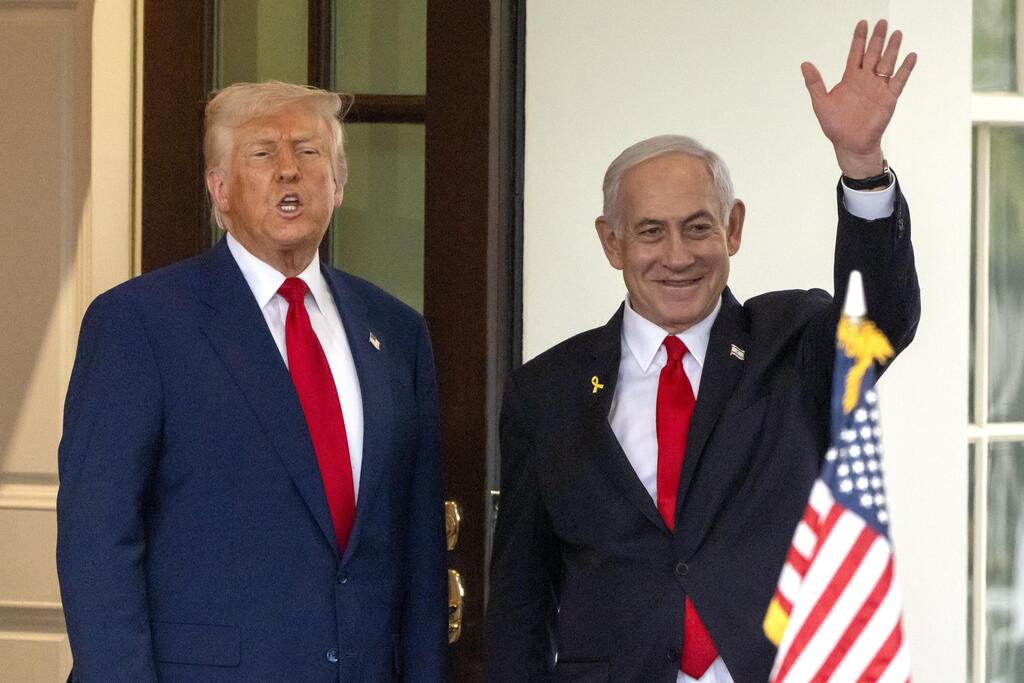After eight months of continuous fighting, Hamas delivered a “positive" Friday to a proposed ceasefire and hostage-release agreement, prompting Israeli officials to confirm progress in the negotiations.
On Saturday evening, the government approved sending a delegation to Doha, Qatar for follow-up proximity talks. The timing of the talks has not yet been determined.
4 View gallery


Khalil al-Hayya, Donald Trump, Benjamin Netanyahu
(Photo: AP Photo/Ariel Schalit, AP Photo/Khalil Hamra, REUTERS/Ronen Zvulun, Joshua Sukoff/Shutterstock)
Prime Minister Benjamin Netanyahu is expected to depart for Washington on Sunday ahead of a Monday meeting with U.S. President Donald Trump, who welcomed the development and said that a deal could be reached within a week.
Despite the apparent breakthrough, significant obstacles remain on both the Israeli and Palestinian sides. A senior Israeli official confirmed earlier Saturday that the decision had been made to dispatch a delegation to Doha following Hamas’ “positive” response. However, Hamas also included a list of demands and clarifications tied to its approval.
In its statement Friday, Hamas said it was “fully ready to enter serious negotiations immediately on mechanisms for implementing the agreement.”
Aid, prisoners and the perimeter: Key obstacles ahead
A source close to Hamas said the group’s main demands include halting the operations of the U.S.-based Gaza Humanitarian Foundation (GHF) in Gaza, a phased withdrawal of the IDF to positions agreed upon in the previous ceasefire and guarantees that fighting will not resume after the initial 60-day truce. “Egypt, Qatar and the United States must provide assurances for the continuation of the process,” the source said.
An official from an armed faction allied with Hamas told Reuters there are still disputes over the distribution of aid, control of the Rafah border crossing and the exact timeline for an Israeli withdrawal.
According to Israeli sources, one of the most contentious points is Hamas’ demand that the United Nations and its agencies oversee humanitarian aid—effectively removing GHF from Gaza. Both Jerusalem and Washington firmly reject this condition. “This foundation is precisely what brought Hamas to agree to a deal,” said an Israeli official Saturday. “It’s no surprise they’re demanding its removal—but that won’t happen.”
For the first time since GHF began operating in Gaza, two American aid workers were injured Saturday while distributing food in southern Khan Younis. According to the foundation, two attackers threw Iranian-made fragmentation grenades at the workers before fleeing into a crowd of civilians.
Another point of contention expected to dominate talks is the location of Israeli withdrawal lines if a deal is reached. Israel’s political leadership insists on maintaining a 1,250-meter security perimeter along the entire Gaza border and a southern withdrawal line up to the Morag Corridor. Defense officials plan to move the entire Palestinian population south of that line into an area that will remain under Israeli control. Netanyahu has instructed IDF Chief of Staff Eyal Zamir to prepare a detailed evacuation plan to be presented upon Netanyahu’s return from Washington.
For Hamas, the combination of keeping the buffer zone and continuing GHF’s operations is seen as a “slap in the face.”
The issues of security guarantees and prisoner releases also remain unresolved. Hamas is demanding clearer commitments to end hostilities, though additional U.S. guarantees may ease concerns. A clash is also expected over the identities of prisoners to be released in the deal. Hamas is expected to insist on the release of high-profile “symbolic” prisoners, as it has in past negotiations, while Israel is likely to oppose that demand forcefully.
A dinner meeting behind closed doors?
Prime Minister Netanyahu is set to depart for Washington on Sunday at 4 p.m., ahead of a meeting with U.S. President Donald Trump scheduled for Monday. According to estimates, the meeting may take the form of a private dinner rather than an official sit-down in the Oval Office with public statements to the press.
Trump said Saturday that it was “good that Hamas responded positively,” adding, “There might be a deal next week.” Still, he cautioned: “I’m very optimistic, but look—it changes day by day.”
It remains unclear whether a joint press conference will be held. Should the format remain closed and without public remarks, it could signal Trump’s intent to finalize key details of a deal with Netanyahu behind the scenes—before publicly announcing a breakthrough as part of his broader regional strategy to expand the Abraham Accords and advance normalization with Saudi Arabia.
Netanyahu is expected to return to Israel on Thursday. He is also scheduled for meetings on Capitol Hill on Tuesday.
An Israeli official said Saturday that the direction is for Netanyahu and Trump to jointly announce the agreement during their White House meeting Monday. “All parties support the deal,” the official said. “The IDF chief and Shin Bet also back even a partial deal. They’re saying we need to reach a situation where we can bring hostages home—as soon as possible.”
Get the Ynetnews app on your smartphone: Google Play: https://bit.ly/4eJ37pE | Apple App Store: https://bit.ly/3ZL7iNv
Before departing, Netanyahu convened a late-night Security Cabinet meeting Saturday to outline his agenda for the U.S. visit. The meeting focused on the current draft of the proposed deal and defined the negotiating limits of the Israeli delegation to the proximity talks in Doha.
According to diplomatic sources, the U.S. hopes to launch the talks before Monday’s Trump-Netanyahu meeting, allowing the two leaders to announce meaningful progress, even if negotiations continue for several days due to ongoing gaps. Mediator Steve Witkoff is expected to travel to Doha to finalize details.
Coalition tensions rise, but hostage deal expected to pass
Ministers from the far-right Otzma Yehudit and Religious Zionist parties are expected to oppose the proposed agreement, despite Netanyahu's assurances that Hamas will not retain control of Gaza and will ultimately be disarmed. Finance Minister Bezalel Smotrich has recently warned he would leave the government if aid continues flowing to Hamas, particularly if GHF is removed and humanitarian oversight shifts to organizations seen as influenced by the terror group.
4 View gallery


Finance Minister Bezalel Smotrich and National Security Minister Itamar Ben-Gvir
(Photo: Gadi Kabalo)
National Security Minister Itamar Ben-Gvir reiterated his hardline stance, saying, “The main goal of this war is the collapse of Hamas. A future promise of disarmament, coupled with a partial deal that includes IDF withdrawal, release of hundreds of terrorist murderers and massive aid that revives Hamas, takes us further from that goal.” He added, “The only way to achieve victory and safely return the hostages is through full conquest of Gaza, a total halt to aid and encouragement of emigration. I call on the prime minister to withdraw from this surrender framework.”
Despite internal opposition, all Likud ministers are expected to support the agreement, leaving Netanyahu with a secure majority in both the Cabinet and the full government.
Deal structure: Staggered release, parallel negotiations
Under the proposed framework, half of the living hostages and half of the deceased hostages would be released in five phases. Parallel negotiations would begin on the terms for ending the war.
Talks are set to start on the first day of the ceasefire, when Hamas is expected to release the majority—eight—of the living hostages. On Day 50, two more living hostages would be freed.
Over the 60-day truce period, Hamas would also return 18 deceased hostages in three phases. If no agreement is reached by the end of the ceasefire, the United States may guarantee that hostilities will not resume, provided that both parties continue engaging in serious negotiations.
Einav Halabi, Lihi Gordon, Yuval Karni and Roy Rubinstein contributed to this report.




